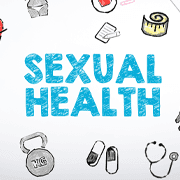STDs and Dry Skin : Identifying the connection
In This Article
STDs and Dry Skin : Identifying the connection
Dr. Sameena
Updated on February 12, 2024
Medically verified by Dr. Arya
Fact checked by Dr. Pournami

Wellness
7 min read
Your skin can reflect your overall health.
Curious to know if skin issues can be more than just mere concerns in some cases?
In fact, they could even be the indicators of underlying health conditions, including sexually transmitted diseases (STDs).
Dry skin is a common symptom which can be overlooked at times.
Wondering if there is any connection between dry skin and STDs? How can it be identified?
Karpedia is here for you. Through this blog, you will understand the connection between STDs and dry skin and the importance of recognising it. Let us dive into it.
Dry Skin And STDs
Dry skin is caused by weather conditions, harsh soaps or chemicals, certain medications, and underlying health conditions.
Following are some of the skin disorders:
-
Jock Itch: A yeast infection that causes itchy, red rashes on your inner thighs and genitals.
-
Psoriasis: A skin condition marked by dry patches commonly seen on the hands, feets and neck.
-
Prurigo Nodularis: A skin condition marked by dry, flesh-coloured nodules that are present all over the body.
When the skin becomes dry, it can develop small cracks or fissures that provide an entryway for pathogens like bacteria, viruses, and fungi that cause STDs.
These can enter the body through unprotected sexual contact or through contact with infected surfaces or objects.
In this way, dry skin can make it easier for pathogens to infect the body and increase the risk of contracting an STD.
Dry skin is a common symptom of a number of conditions, from allergies and psoriasis to STDs. Any patch of dry skin you develop isn’t necessarily a sign you have an STD.
When To Consult A Doctor ?
-
Dry skin in the groin in people who are sexually active with multiple partners.
-
Persistent dry skin that doesn’t improve with over-the-counter moisturisers.
-
Dry skin with Genital ulcers/ swelling/ discharge/ painful urination/weight loss.
-
Dry, itchy blisters over face and neck,mouth (Herpes virus).
-
Sore throat, dry skin rashes over hands, soles and chest (syphilis) ~ sexual/vertical transmission during pregnancy.
-
Fever,cold,sore throat,unexplained weight loss and dry skin.
-
Itching, burning or irritation with dryness and flaking (chlamydia/gonorrhoea).
Early diagnosis can help your doctor manage the disease better and maintain your skin health. Note that dry skin near the genitals may not always be an indication of an STD.
 10mint
10mintSexual Health Matters: How To Maintain Your Sexual Health ?
 10mint
10mintYour Guide to Sexual Health Screening and Preventive Measures
 10 mints
10 mintsSTDs in Women: Comprehensive Guide on Symptoms and Treatments
Get a Callback Now
Understanding the Misconceptions Surrounding STDs and Dry Skin
STDs and dry skin are both stigmatised conditions that can be difficult to discuss openly. It is essential to remember that these conditions are common, and there is no shame in seeking treatment or support.
-
Educating yourself and others about the misconceptions surrounding STDs and dry skin can help to reduce stigma and encourage open dialogue about sexual and skin health issues.
-
One common misconception about STDs is that they only affect people who are promiscuous or engage in risky sexual behaviour.
-
However, anyone who is sexually active can contract an STD, regardless of their number of partners or sexual practices.
-
Similarly, dry skin is often seen as a cosmetic issue, but it can also be a symptom of underlying health conditions or a side effect of certain medications.
Dry skin can occur anywhere on the body, and it’s often the result of issues like allergies, inflammation, or skin irritation.
Maintain healthy skin.
Use protection during sexual intercourse.
Try to have limited sexual partners.
Avoid sharing sex toys or other items that may have come into contact with bodily fluids.
Undergo regular STD screening.
Use a moisturiser regularly, free of fragrances,dyes,which creates a physical barrier for the pathogens to enter the body.
If you do test positive for an STD, it is important to inform your sexual partners openly so that they can also get tested and receive treatment if necessary.
Eating a balanced diet, staying hydrated and getting enough sleep contribute to a healthy skin.
Avoids smoking and alcohol consumption ,which can weaken the immune system and cause skin damage.

